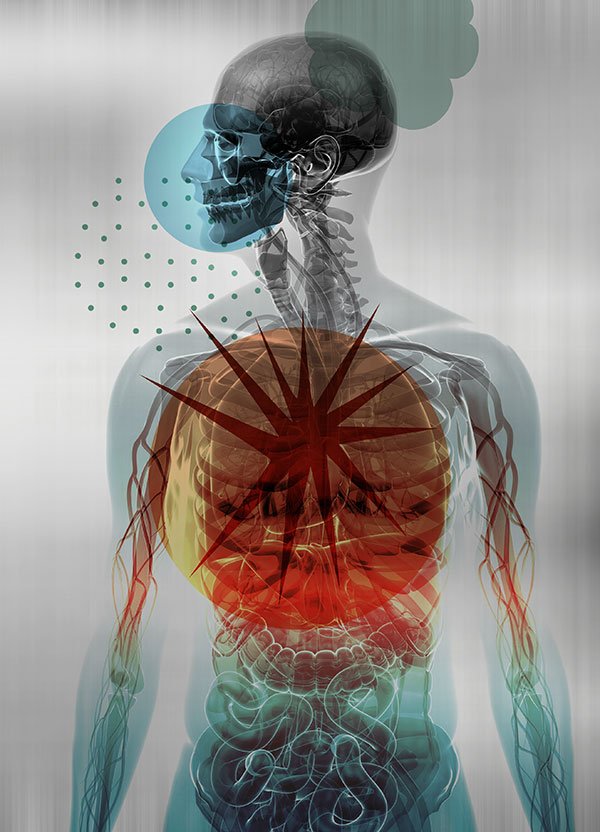 Image 1 of 7
Image 1 of 7

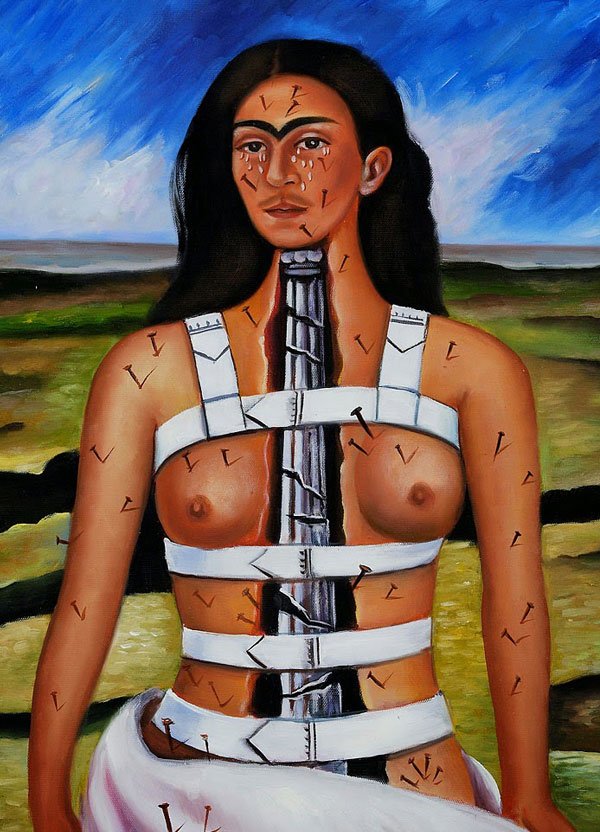 Image 2 of 7
Image 2 of 7

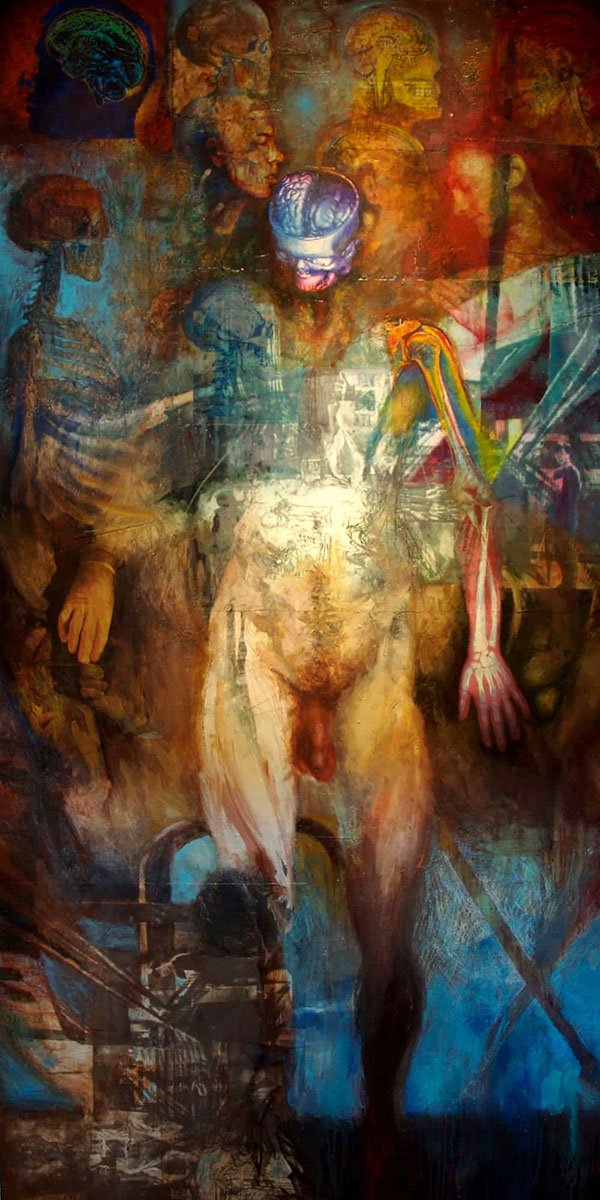 Image 3 of 7
Image 3 of 7

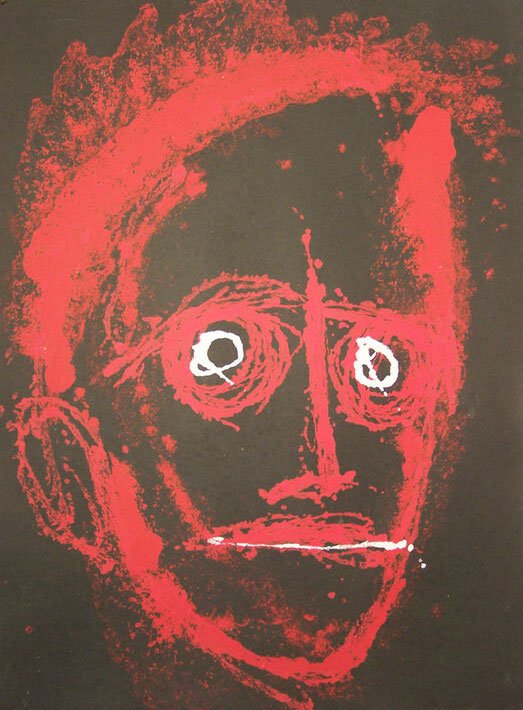 Image 4 of 7
Image 4 of 7

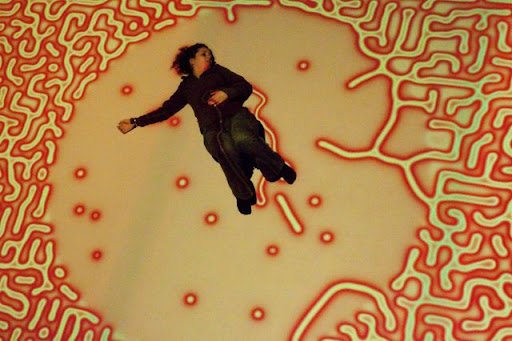 Image 5 of 7
Image 5 of 7

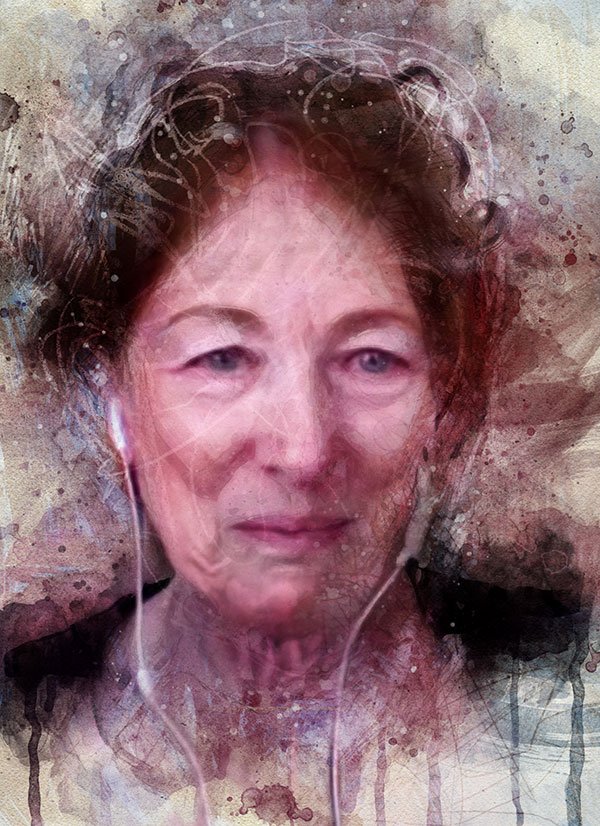 Image 6 of 7
Image 6 of 7

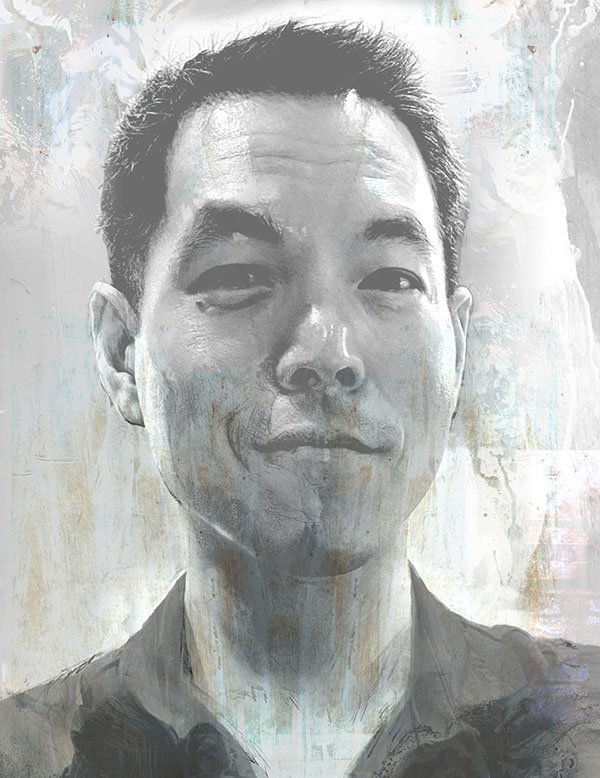 Image 7 of 7
Image 7 of 7








PAST CLASS Transformative Portraiture: Visualizing Pain, Death, and the Afterlife: A Live, Online Class with Artist and Digital Technologist Virgil Wong, Beginning April 9, 2022
4-week live, online course
Date: Saturdays, April 9, 16, 23, and 30
Time: 2-4pm EST/New York City time (11am- 1pm PST California time, 7-9pm GMT London time, 8-10pm CET Paris/Amsterdam time)
Admission: $125 (Patreon members $5/mo and above) / $145 (regular admission)
Taught via Zoom by Virgil Wong
All live classes will also be recorded and archived for students.
Explore an interactive gallery of past student work here.
Pain, death, and the afterlife are all intrinsically unseeable. Yet, the challenge to understand and visualize them can be a powerful creative inspiration for artists.
Transformative portraits are images that change how we think and feel about people's life experiences and death mythologies. For example:
Frida Kahlo's Broken Column viscerally conveys the excruciating pain she suffered after a streetcar accident 20 years earlier.
Jill Littlewood's Zombies and Buddhas series demonstrates how expressive and personal mark-making can evoke vivid sensations of the mind, spirit, and soul.
Brian Knep's Healing Pool displays organic patterns that rupture and heal when people walk over them, reflecting how all of us can be affected by even the slightest interactions.
Virgil Wong's Song of the Panopticon attempts to depict the afterlife based on his interviews with patients who have had near-death experiences.
In this course, students will:
Create transformative portraits and digital avatars.
Explore their personal death iconography and embodied cognition drawing practices.
Connect death mythologies to changes they wish to see and make in themselves and the world.
Class lectures and discussions include:
Portraits of Consciousness: Visualizing Identities, Bodies, and Minds for Transformation (Week 1). Social cognitive theory suggests that people can learn by observing behaviors as well as their probable consequences. Portraiture is a mental model when it captures people's perceptions of themselves and their impact on the surrounding world. These visualizations can serve as a framework for decision-making to potentially influence self-efficacy and behavior change. As depicted in literature like Dickens' A Christmas Carol, negative characteristics like avarice can start to abate when people see the deleterious effects of their actions – even their own death. From Greco-Roman, African, and Bajau grave markers to contemporary depictions of the living and dead, this lecture will examine how artists visualize their subjects' consciousness, identities, and dualism as a catalyst for transformation.
Portraits of Pain: Visualizing Data for Empathy, Time Travel, and Social Change (Week 2). When doctors ask for a rating of pain on a scale of one to ten, patients may wonder, "One to ten what?" Pain takes effort not to feel in one's own body – and an even greater effort to empathize in someone else's body. Patients can use dolls, diagrams, and digital avatars to reduce the effort of communicating their pain while documenting their symptoms and medical history. Virtual reality further fosters compassion by simulating patients' experiences, realities, and identities. In The Birth of the Clinic, Foucault defined the medical gaze as the physician's practice of objectifying the patient's body and separating it from their personhood. This lecture will present the work of artists and designers who challenge the medical gaze – as well as racism, misogyny, and transphobia in healthcare – through data visualizations of pain. These portraits document an individual's past experiences, and they prompt imaginings of future possibilities. Vivid episodic future thinking motivates behavior change by allowing people to "pre-experience" their future selves and initiate planning to accomplish their envisioned objectives.
Portraits of the Afterlife: Visualizing Death Mythologies for Healing and Social Change (Week 3). While religious art has long dominated depictions of the afterlife, more secular narratives have emerged prominently in both pop culture and contemporary artist practices. Blending art with philosophy, literature, psychology, neuroscience, and technology, speculations of post-corporeal existence have transcended common notions of heaven and hell. Based on science, science fiction, religion, or other spiritual beliefs, creating personal death mythologies can serve as a memento mori – a reminder of our limited lifespans and a catalyst for meaningful growth and transformation.
Tutorials and weekly workshop activities include:
Building a real-time self-portrait on Mural.co using iconography, drawing, and text
Designing a custom avatar online with ReadyPlayer.me
Drawing, writing, and brainstorming exercises
Personalized, constructive feedback about assignments from the instructor and fellow students
We will use both traditional and digital art-making tools in this course. No technical expertise or prior experience is required.
Virgil Wong is an artist and digital technologist using virtual reality and artificial intelligence to transform healthcare. He is the Chief Digital Officer of HGS, a global digital experience company – and co-founder of Medical Avatar, an organization using virtual and augmented reality to improve population health outcomes. For 15 years, he led web and multimedia development for patient care, research, and education at Weill Cornell Medicine and NewYork-Presbyterian Hospital.
Virgil is also an independent artist who has exhibited in hospitals and museums worldwide, including The State Hermitage Museum in Russia, the Museum of Contemporary Art in Taipei, and Deitch Projects in NYC. His work has been featured in The New York Times, CBS News, The Huffington Post, and NPR.
At Columbia University, Virgil completed his research certification and coursework in the Ph.D. cognitive studies in education and intelligent technologies program. He holds an MFA in New Media from the Transart Institute and a BFA from RISD, where he dissected and drew human cadavers at the University of Rome Medical School. Virgil documented his anatomical studies in the award-winning memento mori short film Corporeal Self. He also co-directed Murmur, a visualization of a cardiothoracic surgeon's dream journal, which premiered at The Sundance Film Festival.
For over 20 years, Virgil has taught design, photography, film, virtual reality, and interactive media to graduate students at The New School – where he received the university's Faculty Mentorship Award for Outstanding Teaching. His TED talk on visualizations at the heart of patient-centric care is online at: https://www.virgilwong.com
Images
Virgil Wong, COVID Data Portrait, 2020. Digital avatar generated from symptom database of 5.7M COVID-19 cases.
Frida Kahlo, Broken Column, 1944. Oil on masonite.
Virgil Wong, Corporeal Shift, 1994. Acrylic and crayon on wood.
Jill Littlewood, Zombies and Buddhas. Pigmented cotton paper pulp, 22" X 30".
Brian Knep, Healing Pool with Islands, 2010. Interactive video installation.
Virgil Wong, Jill Littlewood, 2021. Watercolor, pencil, and wax on paper.
Virgil Wong, Self-Portrait, 2020. Pencil, ink, and Gansai Tambi paint on paper.
4-week live, online course
Date: Saturdays, April 9, 16, 23, and 30
Time: 2-4pm EST/New York City time (11am- 1pm PST California time, 7-9pm GMT London time, 8-10pm CET Paris/Amsterdam time)
Admission: $125 (Patreon members $5/mo and above) / $145 (regular admission)
Taught via Zoom by Virgil Wong
All live classes will also be recorded and archived for students.
Explore an interactive gallery of past student work here.
Pain, death, and the afterlife are all intrinsically unseeable. Yet, the challenge to understand and visualize them can be a powerful creative inspiration for artists.
Transformative portraits are images that change how we think and feel about people's life experiences and death mythologies. For example:
Frida Kahlo's Broken Column viscerally conveys the excruciating pain she suffered after a streetcar accident 20 years earlier.
Jill Littlewood's Zombies and Buddhas series demonstrates how expressive and personal mark-making can evoke vivid sensations of the mind, spirit, and soul.
Brian Knep's Healing Pool displays organic patterns that rupture and heal when people walk over them, reflecting how all of us can be affected by even the slightest interactions.
Virgil Wong's Song of the Panopticon attempts to depict the afterlife based on his interviews with patients who have had near-death experiences.
In this course, students will:
Create transformative portraits and digital avatars.
Explore their personal death iconography and embodied cognition drawing practices.
Connect death mythologies to changes they wish to see and make in themselves and the world.
Class lectures and discussions include:
Portraits of Consciousness: Visualizing Identities, Bodies, and Minds for Transformation (Week 1). Social cognitive theory suggests that people can learn by observing behaviors as well as their probable consequences. Portraiture is a mental model when it captures people's perceptions of themselves and their impact on the surrounding world. These visualizations can serve as a framework for decision-making to potentially influence self-efficacy and behavior change. As depicted in literature like Dickens' A Christmas Carol, negative characteristics like avarice can start to abate when people see the deleterious effects of their actions – even their own death. From Greco-Roman, African, and Bajau grave markers to contemporary depictions of the living and dead, this lecture will examine how artists visualize their subjects' consciousness, identities, and dualism as a catalyst for transformation.
Portraits of Pain: Visualizing Data for Empathy, Time Travel, and Social Change (Week 2). When doctors ask for a rating of pain on a scale of one to ten, patients may wonder, "One to ten what?" Pain takes effort not to feel in one's own body – and an even greater effort to empathize in someone else's body. Patients can use dolls, diagrams, and digital avatars to reduce the effort of communicating their pain while documenting their symptoms and medical history. Virtual reality further fosters compassion by simulating patients' experiences, realities, and identities. In The Birth of the Clinic, Foucault defined the medical gaze as the physician's practice of objectifying the patient's body and separating it from their personhood. This lecture will present the work of artists and designers who challenge the medical gaze – as well as racism, misogyny, and transphobia in healthcare – through data visualizations of pain. These portraits document an individual's past experiences, and they prompt imaginings of future possibilities. Vivid episodic future thinking motivates behavior change by allowing people to "pre-experience" their future selves and initiate planning to accomplish their envisioned objectives.
Portraits of the Afterlife: Visualizing Death Mythologies for Healing and Social Change (Week 3). While religious art has long dominated depictions of the afterlife, more secular narratives have emerged prominently in both pop culture and contemporary artist practices. Blending art with philosophy, literature, psychology, neuroscience, and technology, speculations of post-corporeal existence have transcended common notions of heaven and hell. Based on science, science fiction, religion, or other spiritual beliefs, creating personal death mythologies can serve as a memento mori – a reminder of our limited lifespans and a catalyst for meaningful growth and transformation.
Tutorials and weekly workshop activities include:
Building a real-time self-portrait on Mural.co using iconography, drawing, and text
Designing a custom avatar online with ReadyPlayer.me
Drawing, writing, and brainstorming exercises
Personalized, constructive feedback about assignments from the instructor and fellow students
We will use both traditional and digital art-making tools in this course. No technical expertise or prior experience is required.
Virgil Wong is an artist and digital technologist using virtual reality and artificial intelligence to transform healthcare. He is the Chief Digital Officer of HGS, a global digital experience company – and co-founder of Medical Avatar, an organization using virtual and augmented reality to improve population health outcomes. For 15 years, he led web and multimedia development for patient care, research, and education at Weill Cornell Medicine and NewYork-Presbyterian Hospital.
Virgil is also an independent artist who has exhibited in hospitals and museums worldwide, including The State Hermitage Museum in Russia, the Museum of Contemporary Art in Taipei, and Deitch Projects in NYC. His work has been featured in The New York Times, CBS News, The Huffington Post, and NPR.
At Columbia University, Virgil completed his research certification and coursework in the Ph.D. cognitive studies in education and intelligent technologies program. He holds an MFA in New Media from the Transart Institute and a BFA from RISD, where he dissected and drew human cadavers at the University of Rome Medical School. Virgil documented his anatomical studies in the award-winning memento mori short film Corporeal Self. He also co-directed Murmur, a visualization of a cardiothoracic surgeon's dream journal, which premiered at The Sundance Film Festival.
For over 20 years, Virgil has taught design, photography, film, virtual reality, and interactive media to graduate students at The New School – where he received the university's Faculty Mentorship Award for Outstanding Teaching. His TED talk on visualizations at the heart of patient-centric care is online at: https://www.virgilwong.com
Images
Virgil Wong, COVID Data Portrait, 2020. Digital avatar generated from symptom database of 5.7M COVID-19 cases.
Frida Kahlo, Broken Column, 1944. Oil on masonite.
Virgil Wong, Corporeal Shift, 1994. Acrylic and crayon on wood.
Jill Littlewood, Zombies and Buddhas. Pigmented cotton paper pulp, 22" X 30".
Brian Knep, Healing Pool with Islands, 2010. Interactive video installation.
Virgil Wong, Jill Littlewood, 2021. Watercolor, pencil, and wax on paper.
Virgil Wong, Self-Portrait, 2020. Pencil, ink, and Gansai Tambi paint on paper.
4-week live, online course
Date: Saturdays, April 9, 16, 23, and 30
Time: 2-4pm EST/New York City time (11am- 1pm PST California time, 7-9pm GMT London time, 8-10pm CET Paris/Amsterdam time)
Admission: $125 (Patreon members $5/mo and above) / $145 (regular admission)
Taught via Zoom by Virgil Wong
All live classes will also be recorded and archived for students.
Explore an interactive gallery of past student work here.
Pain, death, and the afterlife are all intrinsically unseeable. Yet, the challenge to understand and visualize them can be a powerful creative inspiration for artists.
Transformative portraits are images that change how we think and feel about people's life experiences and death mythologies. For example:
Frida Kahlo's Broken Column viscerally conveys the excruciating pain she suffered after a streetcar accident 20 years earlier.
Jill Littlewood's Zombies and Buddhas series demonstrates how expressive and personal mark-making can evoke vivid sensations of the mind, spirit, and soul.
Brian Knep's Healing Pool displays organic patterns that rupture and heal when people walk over them, reflecting how all of us can be affected by even the slightest interactions.
Virgil Wong's Song of the Panopticon attempts to depict the afterlife based on his interviews with patients who have had near-death experiences.
In this course, students will:
Create transformative portraits and digital avatars.
Explore their personal death iconography and embodied cognition drawing practices.
Connect death mythologies to changes they wish to see and make in themselves and the world.
Class lectures and discussions include:
Portraits of Consciousness: Visualizing Identities, Bodies, and Minds for Transformation (Week 1). Social cognitive theory suggests that people can learn by observing behaviors as well as their probable consequences. Portraiture is a mental model when it captures people's perceptions of themselves and their impact on the surrounding world. These visualizations can serve as a framework for decision-making to potentially influence self-efficacy and behavior change. As depicted in literature like Dickens' A Christmas Carol, negative characteristics like avarice can start to abate when people see the deleterious effects of their actions – even their own death. From Greco-Roman, African, and Bajau grave markers to contemporary depictions of the living and dead, this lecture will examine how artists visualize their subjects' consciousness, identities, and dualism as a catalyst for transformation.
Portraits of Pain: Visualizing Data for Empathy, Time Travel, and Social Change (Week 2). When doctors ask for a rating of pain on a scale of one to ten, patients may wonder, "One to ten what?" Pain takes effort not to feel in one's own body – and an even greater effort to empathize in someone else's body. Patients can use dolls, diagrams, and digital avatars to reduce the effort of communicating their pain while documenting their symptoms and medical history. Virtual reality further fosters compassion by simulating patients' experiences, realities, and identities. In The Birth of the Clinic, Foucault defined the medical gaze as the physician's practice of objectifying the patient's body and separating it from their personhood. This lecture will present the work of artists and designers who challenge the medical gaze – as well as racism, misogyny, and transphobia in healthcare – through data visualizations of pain. These portraits document an individual's past experiences, and they prompt imaginings of future possibilities. Vivid episodic future thinking motivates behavior change by allowing people to "pre-experience" their future selves and initiate planning to accomplish their envisioned objectives.
Portraits of the Afterlife: Visualizing Death Mythologies for Healing and Social Change (Week 3). While religious art has long dominated depictions of the afterlife, more secular narratives have emerged prominently in both pop culture and contemporary artist practices. Blending art with philosophy, literature, psychology, neuroscience, and technology, speculations of post-corporeal existence have transcended common notions of heaven and hell. Based on science, science fiction, religion, or other spiritual beliefs, creating personal death mythologies can serve as a memento mori – a reminder of our limited lifespans and a catalyst for meaningful growth and transformation.
Tutorials and weekly workshop activities include:
Building a real-time self-portrait on Mural.co using iconography, drawing, and text
Designing a custom avatar online with ReadyPlayer.me
Drawing, writing, and brainstorming exercises
Personalized, constructive feedback about assignments from the instructor and fellow students
We will use both traditional and digital art-making tools in this course. No technical expertise or prior experience is required.
Virgil Wong is an artist and digital technologist using virtual reality and artificial intelligence to transform healthcare. He is the Chief Digital Officer of HGS, a global digital experience company – and co-founder of Medical Avatar, an organization using virtual and augmented reality to improve population health outcomes. For 15 years, he led web and multimedia development for patient care, research, and education at Weill Cornell Medicine and NewYork-Presbyterian Hospital.
Virgil is also an independent artist who has exhibited in hospitals and museums worldwide, including The State Hermitage Museum in Russia, the Museum of Contemporary Art in Taipei, and Deitch Projects in NYC. His work has been featured in The New York Times, CBS News, The Huffington Post, and NPR.
At Columbia University, Virgil completed his research certification and coursework in the Ph.D. cognitive studies in education and intelligent technologies program. He holds an MFA in New Media from the Transart Institute and a BFA from RISD, where he dissected and drew human cadavers at the University of Rome Medical School. Virgil documented his anatomical studies in the award-winning memento mori short film Corporeal Self. He also co-directed Murmur, a visualization of a cardiothoracic surgeon's dream journal, which premiered at The Sundance Film Festival.
For over 20 years, Virgil has taught design, photography, film, virtual reality, and interactive media to graduate students at The New School – where he received the university's Faculty Mentorship Award for Outstanding Teaching. His TED talk on visualizations at the heart of patient-centric care is online at: https://www.virgilwong.com
Images
Virgil Wong, COVID Data Portrait, 2020. Digital avatar generated from symptom database of 5.7M COVID-19 cases.
Frida Kahlo, Broken Column, 1944. Oil on masonite.
Virgil Wong, Corporeal Shift, 1994. Acrylic and crayon on wood.
Jill Littlewood, Zombies and Buddhas. Pigmented cotton paper pulp, 22" X 30".
Brian Knep, Healing Pool with Islands, 2010. Interactive video installation.
Virgil Wong, Jill Littlewood, 2021. Watercolor, pencil, and wax on paper.
Virgil Wong, Self-Portrait, 2020. Pencil, ink, and Gansai Tambi paint on paper.
